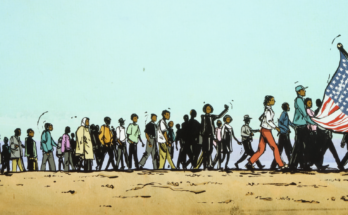Since automobiles first began to replace the horse and carriage, a love affair has existed between man and these technological marvels. From now until June 20, the High Museum of Art has on display 18 extraordinary cars that date from the 1930s to the 1960s.
“These are 18 of the most rare and spectacularly conceived vehicles, which show man at his most creative and innovative,” says Michael Bartsch, of Porsche Cars North America, the exhibit’s lead corporate sponsor. “This exhibit is not about ‘cars,'” he stresses. “It is about art, design, emotion, fashion and history.”
And each of the cars do evoke emotion, glamour, a feeling of velocity, an optimism for the future and encapsulate the fashions of the past in its own way, which is why Michael E. Shapiro, the Nancy and Holcombe T. Green Jr. Director of the High Museum of Art calls them “rolling sculptures.” Before “The Allure of the Automobile” opened on March 21, Shapiro says they already had sold more than 20,000 tickets to people from 18 states and Canada. And they will be coveted tickets: The exhibit will only appear in Atlanta.
The first part focuses on the custom body work done by coach builders between the two world wars to create special automobile bodies for discerning clientele. “Until World War I, most cars had been utilitarian objects with one principal goal: transportation,” says Ken Gross, guest curator of the exhibition. “But as tastes and wealth coincided, designers could create and/or customize an automobile’s body, dramatically altering its silhouette and decoration, producing artful, one-of-a-kind objects. Lavish and often beautifully trimmed with aluminum, chrome, inlaid wood and lacquer, the streamlined silhouettes of the finest mid-century cars represent prime examples of Art Moderne design.”
On display in this section are two cars owned by Clark Gable: a 1935 Dusenberg JN Roadster, which had a 320-horsepower engine when most cars only had 100-horsepower engines, and a 1934 Packard LeBaron Runabout Speedster, which has a 12-cylinder engine (most cars today have V6 engines). Other automobiles include a 1933 Pierce-Arrow Silver Arrow (“Only five were built; only three survive; and we have one,” Gross says); a 1937 Delage D8-120S, which was so often seen driven by beautiful women it prompted actor Peter Ustinov to remark, “One drives, of course, an Alfa Romero; one is driven in a Rolls, but one gives only a Delage to one’s favorite mistress”; the airplane-inspired 1937 Dubonnet Hispano-Suiza H-6C “Xenia,” which took five years to build; a 1937 Mercedes-Benz 540K Special Roadster; a 1938 Alfa Romero 8C2900B Touring Berlinetta; and a 1937 Bugatti Type 57S Atalante (my personal favorite is the 1937 Bugatti Type 57SC Atlantic-Electron Coupe, but any Bugatti is a work of art).
The second section of the exhibition spotlights the divergence in design between American and European post-war automobile manufacturers. While business boomed in America, cars began to personify the population’s economic optimism and desire to enter the space race. In Europe, however, cars got smaller and sportier.
Two rare Porsches bridge the divide between the pre- and post-war automobiles on display. The shell of the 1938-39 Porsche Type 64, the first car to bear the Porsche name, looks like a modern sports car. “It was designed for the Berlin to Rome race that was canceled due to WWII,” Bartsch says. “This is the first time it’s been exhibited outside of Germany.” Along with a second rare Porsche in the exhibit, the 1953 Porsche 550, Bartsch says “designers make pilgrimages to look at these [automobiles] to remind themselves of the Porsche DNA” before beginning work on new models.
Some of the cars in the post-war section, like the 1957 Jaguar XK-SS Roadster that Steve McQueen once owned (only 16 were ever built), 1961 Ferrari 250 GT Comp and 1959 Chevrolet Corvette Sting Ray, seem like they’re in perpetual motion, even when stationary. Other highlights include a 1948 Tucker Model 48 Torpedo, which was manufactured in Tucker, Ga., and the 1954 Dodge Firearrow III Concept Coupe, which is the only one of its kind.
Special events being held in conjunction with “The Allure of the Automobile” include a family day on April 11 and a classic car parade and showcase down Peachtree Street on May 8. For more information, call 404-733-HIGH or visit high.org.
Here’s a sneak preview of what you will see:



